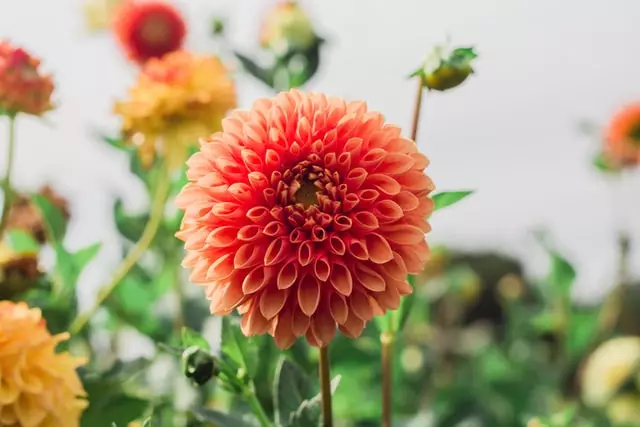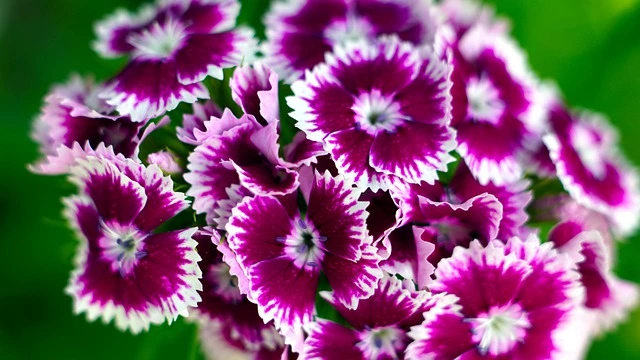Get to know list of winter flowers that you can grow during cooler season in your garden. Read step by step guide to learn how to grow these listed winter flowers.
Flowers are essential part of a garden. Whether you grow herbs or vegetables, without flowering plants, a garden looks incomplete. Flowers add beautiful shades in a garden. But are you confused that which flowers you should grow this winter?
Well, don’t worry, Agriculture Review is back again with another article to add more information in your book of gardening. Keep reading till the end to know the names of various flowering plants that you can grow during winter season.
Table of Contents
List Of Winter Flowering Plants
Petunia
They are one of the most alluring flowering plant that you can grow during winters. They are easy to care for and requires less space to grow. Petunias are available in various shapes, shades, and colours.

In a 6 to 8 inches pot, they can grow well. Just add well drained potting mix rich in organic matter and plant the saplings. Keep them under bright sunlight, feed with one to two handful of organic manure and one tea spoon bone-meal once a month.
Avoid soggy or poorly drained soil to maintain good health of your plant. If you follow these points then you will get heavy bloom in your petunia plant. To learn more about growing petunias in your garden, checkout my article on how to grow petunias.
Dahlia
Dahlias are perennial herbaceous flowering plants that we can grow during winters in tropical to sub tropical climate. In the world there are more than 42 varieties of Dahlia, they are available in various plant size, flower shape, and colour.
Start growing dahlia in a 12 inches sized pot by filling well drained potting mix rich in organic matter. Avoid clayey or poorly drained soil. You can also grow then in grow bags.

Dahlia loves 6 to 8 hours of bright direct sunlight and moderate watering. Add any bulky organic manure mixed with banana peel fertilizers once in a month for fulfilling nutrients requirement of the plant. Staking, time to time pinching and disbudding is also necessary to keep the plant in good shape.
To learn more about dahlias, you can checkout my article on how to grow and care for dahlia.
Pansy
This beautiful flowering plant winters can grow up to 20 to 24 centimetres in height and produces multicolour flowers. They attract visitors because of their flower shape that looks like butterfly in the garden. So if you love getting surrounded by butterflies then plant this one in your garden.

Pansy love to grow in well drained, humus rich soil in a 6 to 8 inches sized pot. They can grow in full as well as partial shade sunlight and requires moist soil to grow. Along with any bulky organic manure you can also add banana peel fertilizers to enhance flowering.
Removing dead flowers time to time helps in getting new flowers in the plant. To learn more about pansy, you can visit my article on “Pansy Care Guide.”
Verbena
Verbena is a genus of draught tolerant flowering plants. There are more than 250 species of flowering plant in the genus Verbena. Flowers of verbena can be blue, pink, white, red, to purple in colour and are known to attract pollinators in the garden.

Select medium sized pots and fill them with well drained soil that have moderate amount of organic matter. Place the plant where it can receive bright direct or indirect sunlight for at least 6 to 8 hours. Apply water only when soil becomes dry.
Half tea spoon of bone-meal and a handful of organic manure once after every 20 days is sufficient for this plant. To learn more about growing verbena, you can checkout my article on growing and caring for verbena plant.
Cineraria
Cineraria or Ash plant is a genus of flowering plants in the Asteraceae family. This beautiful flowering plant can grow up to 16 to 20 inches high and produces flower that can be white, red, purple, to blue in colour. You can grow this plant during winters but it will start producing flowers from the onset of spring season.
Cineraria loves well drained loose soil that is rich in organic matter. Select 4 to 8 inches sized pot for growing cineraria. Place the pot under bright indirect sunlight for better growth and development. Keep the soil constantly moist but avoid soggy soil.
Feed your plant with one to two handful of any organic manure once after every 20 days. For better flowering add any potassium rich fertilizers from late winter season. To learn more about cineraria, you can checkout my article on “Cineraria Care Guide.”
Dianthus
Dianthus is a name of genus that has more than 200 species of beautiful flowering plants. They are famous for five petals flower and strong spicy fragrance, especially pink coloured dianthus. However dianthus flower can be white, red, pink, to yellow in colour.

Small to medium sized pot filled with well drained, fertile, and alkaline potting mix is ideal for growing dianthus. 4 to 6 hours of bright direct sunlight is necessary for this winter flowering plant. Keep the soil moist but avoid waterlogging condition in the pot.
Once after every 30 days, add a handful of vermicompost and a tea spoon of bone meal fertilizers to enhance plant growth. To learn more about dianthus, you can checkout my article on “Dianthus Care Guide.”
Marigold
Marigold is one of the most common winter flower that gardeners love to grow in their garden. It can also act as trap crop and keep pests away when you plant them around other edible crop. And if you are a beginner then growing a marigold in the garden can be a good choice.
Well drained, sandy loam soil rich in organic matter is good for marigold. Fill the potting mix in a 6 to 12 inches sized pot and plant marigold saplings. Marigold is also a draught tolerant plant and can survive with less amount of water.
Add water only when soil becomes dry. Feed with any organic fertilizer and half tea spoon bone meal once after every 30 days. To learn more about marigold you can checkout my article on how to grow marigold.
Calendula
Calendula is also known as “Pot Marigold” because they are smaller in plant size and the flower looks similar to marigold. Flower colour can vary from yellow to orange in colour. You can grow them in a 6 to 10 inches sized pot.

Fill pots with well drained soil mixed with moderate amount of organic matter. You can either sow seeds or transplant seedlings in the pots. Calendula requires 4 to 6 hours of bright sunlight daily and frequent watering.
Feed with organic fertilizer such as vermicompost once after every 30 days during early growth period. Once the plant starts flowering feed with potassium rich organic fertilizers to enhance blooming. To learn more about calendula you can checkout my article on how to grow calendula.
Aster
Aster is a genus that has over 180 species of single to multilayer petal flowering plants. They can easily grow in temperate as well as tropical climate. Moreover they are also popular as pollinator attracting plants.

Aster plant loves well drained, moist, sandy loam soil rich in organic matter. Select 12 inches sized pot and transplant aster seedling in the pot. Place the pot where your plant can get 5 to 6 hours of direct sunlight. Keep the soil moist but avoid waterlogging.
Avoid adding nitrogen rich fertilizers, add potassium rich organic fertilizers once in a month. To learn more about aster, visit my article on how to grow aster.
Rose
Although rose is a perennial plant and goes under dormancy during harsh winters. But October to November is the best time to propagate and plant rose plant in tropical regions. And if you are living in tropical regions then they will even bloom during early winters.
Rose plant loves fertile, well drained soil with good moisture holding capacity. Pot size differs according to the variety of rose. You can grow Floribunda, Grandiflora, Hybrid tea, Miniature, or Climber rose in your garden.
Select a spot where your rose plant can receive at least 6 to 8 hours of direct sunlight. Rose are heavy feeders there heavy feeding with little amount of nitrogen and good amount of potassium, phosphorus, and traces of microelements is necessary.
If you are already growing rose in your garden then you can propagate them in October by checking out my article on how to propagate rose plant.





